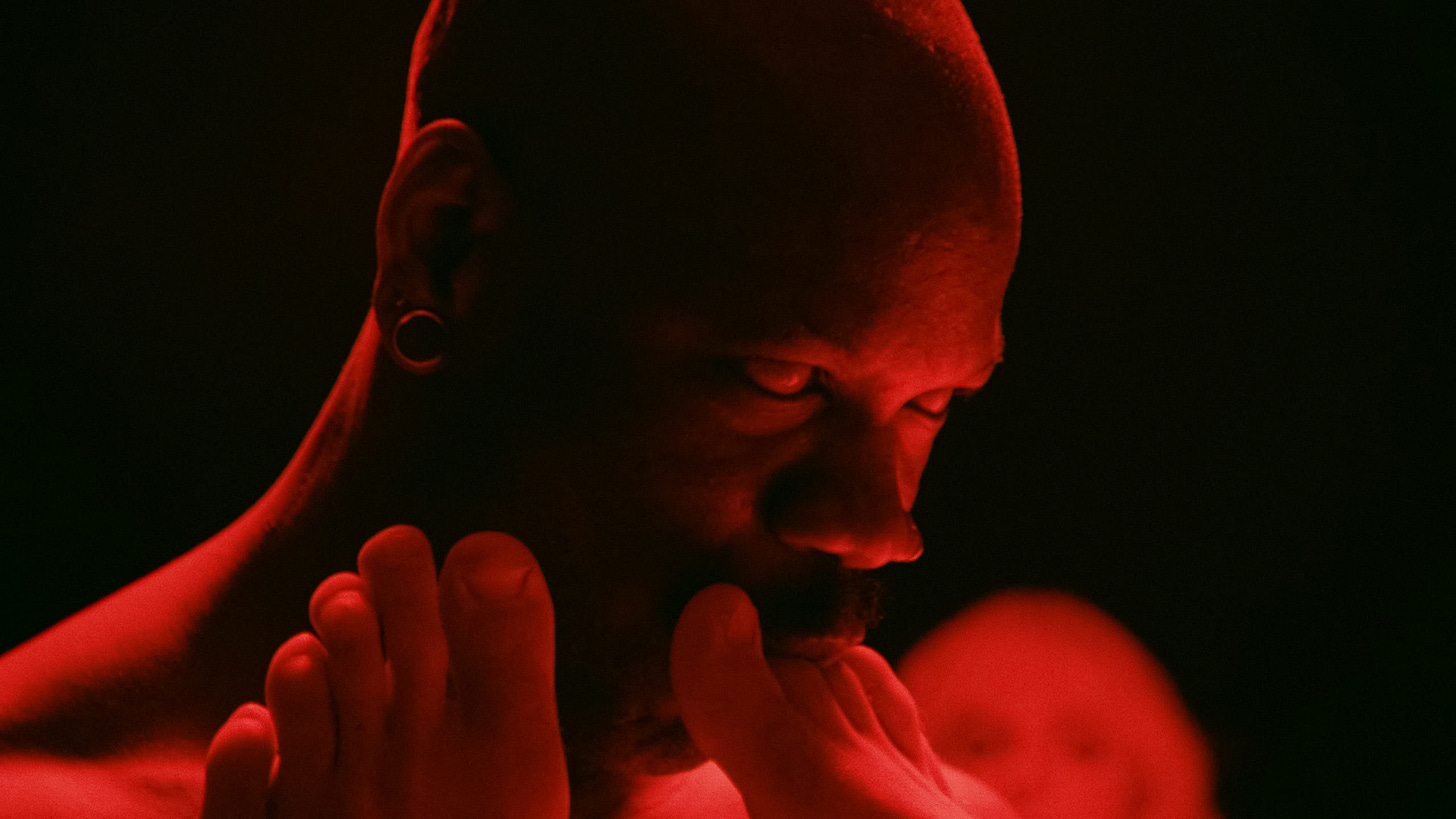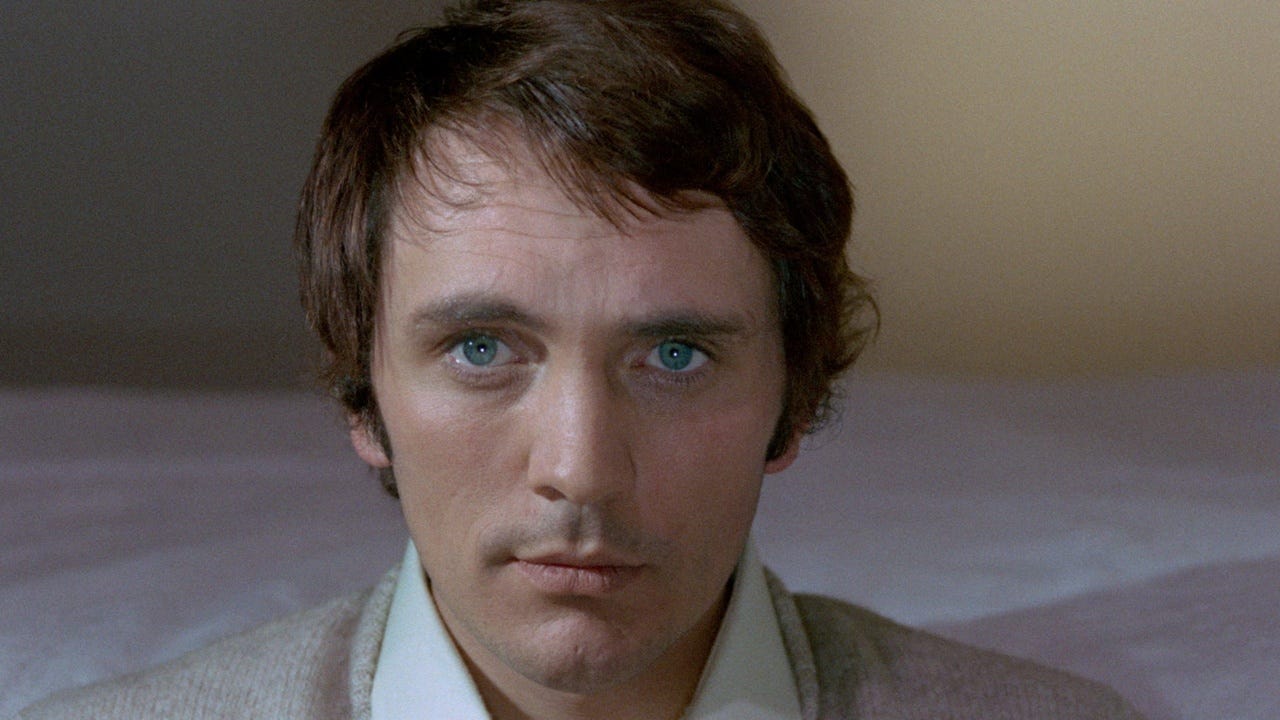Porn, politics and Pasolini
Discussing Queercore with hardcore Canadian filmmaker Bruce LaBruce
Porn can be political, and it absolutely should be communal, argues Bruce LaBruce, the provocateur prince of Canadian cinema who has delivered both the sacred and profane in far-out films from Super 8 ½ to LA Zombie via Hustler White, The Misandrists to Saint Narcisse.
“My favourite porn is ’70s porn, when it used to be shot on film and was watched at the cinema,” he says. “It was a group experience, and I think that was great, because there was less shame involved. It was something that everyone shared as an experiential kind of thing.”
Fittingly enough, we meet at the Grand Hyatt on a crisp but bright winter’s day in Berlin the day after his pornographic provocation The Visitor – an eyebrow-raising riff on Pier Paolo Pasolini’s 1968 engorged psychodrama Teorema – enjoyed its communal world premiere at the imposing East Berlin edifice, Kino International, in the shadow of the Fernsehturm. It’s screening as part of this year’s Melbourne Queer Film Festival.
Assassinated Italian polymath Pasolini’s film cast Terence Stamp as the mysterious visitor who appears from out of nowhere to seduce, one by one, the filthy rich inhabitants of a Milanese mansion, desecrating both their bodies and the bourgeoise constructs. LaBruce transplants the action to London, reimagining the visitor, depicted by non-binary artist and performer Bishop Back, as a refuge washed up on the banks of the Thames in an old suitcase.
The family are played by Macklin Kowal, Amy Kingsmill, Ray Filar and Kurtis Lincoln, with Luca Federici as their maid. “They’re all queer performers who usually do burlesque,” LaBruce says. “They brought a queer sensibility to it, including Ray, who is transmasculine but plays the daughter and had never done porn. It was very collaborative and had discussions about how her sex would be represented, in that was very organic.”
While LaBruce has been a lifelong student of Pasolini’s class, sexuality and gender-conscious oeuvre, this tribute came out of left field, he says. “It was totally unplanned, and it was kind of magical how it just happened.”
Twisting Teorema
London-based, hardcover cinema and fashion-focused magazine Doesn’t Exist dedicates each edition to a different artist, including Peter Greenaway and John Waters, choosing to valorise LaBruce. “I did a fashion shoot for them, and my idea was to do a sci-fi reimagining of Pasolini, which took place in Antwerp.”
Subsequently, The Visitor producers Alex Babboni and Victor Fraga met the team at A/political, a London-based arts organisation. “They generally support artists who don’t fit into the establishment because their work is either too complicated, too expensive or too controversial, too political,” LaBruce says.
The filmmaker suggested to them he turn the spread into a movie, with pre-production occurring in his hometown of Toronto. “I had never met any of the A/Political people in person, or any of the actors until I arrived in London. I went straight from the airport to location scouting.”
Long-term fans of LaBruce’s no-fucks-to-give-filmmaking might recognise some of these locations from 1999’s London-set, thieving and gang-bashing neo-Nazi-featuring Skin Flick, co-produced with German porn company Cazzo Film. Daily headlines in the UK capital suggested the new twist on Teorema. “All the news was about the anti-immigration rise of the right-wing, with [the then Conservative government] talking about shipping all refugees to Rwanda, so I figured I’d make the visitor a Black refugee, specifically about what’s going on in the UK, but it’s happening everywhere.”
Pasolini is a hero to LaBruce who has deeply influenced his career. “As a film student, I was, and still am, a crazy cinephile,” he says. “I started out intending to be a film critic and took tonnes of psychoanalytic courses with cinema. And when I was in my 20s, I saw all of Pasolini’s films. Salo had a profound effect on me, when he started going in a very pornographic direction towards the end of his career.”
LaBruce contemplates how far Pasolini would have gone if it weren’t for his brutal murder on a beach in Ostia in 1975. “I always wondered, if he hadn’t been assassinated, if he would have made porn, because I’ve talked to directors, like Paul Verhoeven, who want to make porn because it’s the ultimate boundary to be transgressed in cinema.”
He took his responsibility to Pasolini seriously. “I rewatched Teorema so many times to prepare for the film and read the book he concurrently with making the film, so I took it very seriously,” he says. “If you’re going to do a remake of Pasolini, you don’t take it lightly. He’s the great master of cinema, one of my ultimate heroes, along with [Reiner Werner] Fassbinder. You know, queer auteurs.”
Devouring Pasolini’s canon all over again in preparation, including The Trilogy of Life – The Decameron (1971), The Canterbury Tales (1972) and Arabian Nights (1974) – LaBruce says he is driven by the Italian filmmaker’s conflicting passions. “He’s a Catholic Marxist atheist, you know. I mean, how can you sustain those three contradictions?”
LaBruce says he’s technically agnostic, “But I have a huge Catholic fetish. I’m not even Catholic, and I’ve made several films about Catholicism.
“I’m obsessed with the saints, and I’ve done a lot of work, including photography, investigating the intersection of sexual and religious ecstasy and how they’re kind of the same at a certain point. People with fetishes treat the love object of their fetish, like a foot, with a religious devotion. The nuns in Ken Russell’s The Devils worship to the point of sexual frenzy, and I’m really fascinated by that dynamic.”
Sex is political
As we chat in Berlin, LaBruce says his obsession with the transgressive power of porn and the influence of the far-right in politics began with his self-described “naïve” debut feature No Skin Off My Ass (1991), in which he played a hairdresser seduced by Klaus von Brücker’s neo-Nazi, set to a punk soundtrack and including graphic sex between the pair.
“This is before the internet, before social media and before OnlyFans, where now everyone’s a fucking porn star,” he says. “But back then, to put yourself in your own movie having sex was crazy. And it went on the film festival circuits, not just the queer ones, so I was giving blowjobs internationally on screen. No Skin Off My Ass was pornographic, but it was also a remake of Robert Altman’s That Cold Day in the Park (1969). There was a lot of political content, and there’s an anti-capitalist diatribe by Angela Davis on the soundtrack.”
He’s very happy moving between the centre and beyond the pale. “I really sort of created my own category,” he says. “I’m one of the few filmmakers that is allowed to go from doing hardcore porn and back to independent features with bigger budgets and government financing, so it’s a kind of dance that I do, back and forth.”
It’s all he’s known. “I was a queer punk in the late ’80s, hanging out with anarchists in the downtown scene making Super Eight movies,” he recalls. “The hardcore punks in North America were highly political, very against the rise of the right-wing, Reagan and that whole transformation. We did fanzines, so it was this multi-disciplinarian kind of thing where we’re writing manifestos and drawing comics, making these explicit films and I started photography.”
His career remains part of a strong, anti-establishment underground. “Because we thought the established gay movement was middle-class and white bourgeoise, and we weren’t interested in the tired old gays, so we turned to punk,” LaBruce says. “They were more interesting aesthetically and politically, but there was a lot of homophobia. So that’s why we started Queercore, which was punks that are queer. We were in opposition to these punks were radical, but sexually conventional.”
LaBruce naturally adores John Waters’ work, but on the more commercial end of the scale, he also has a lot of time for The White Lotus creator Mike White. “There are also a lot of young, queer, female filmmakers working in the horror genre,” he says, pointing to Mexican filmmaker Michelle Garza Cervera’s Huesera: The Bone Woman and Irish writer/director Kate Dolan’s changeling drama You Are Not My Mother as prime examples.
Meeting the late, great, queer pioneer Wakefield Poole, a former dancer who captured both the queer rights protest movement in documentaries like Freedom Day Parade and a pornographic spin on The Boys in the Band, William Friedkin’s big screen adaptation of
Mart Crowley’s 1968 play, Poole shot on Fire Island and dubbed The Boys in the Sand.
“I had the great privilege, before he died, of going down and showing films with him in Jacksonville, Florida, where he was living,” LaBruce recalls. “He showed Bijou, which is maybe one of my favourite films, and I showed Hustler White as we sat there with microphones talking through the films to the audience. He had retired and played bridge with eight older women. They heard that he had made porn films but had never seen them, so they came to the screening and it was amazing.”
The Visitor is screening at the Melbourne Queer Film Festival






